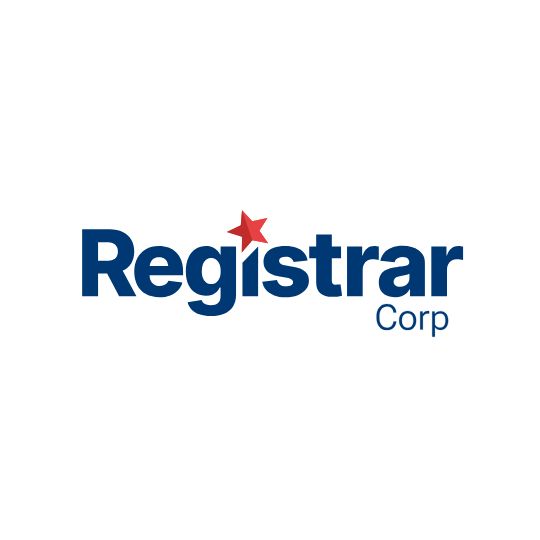Canada’s commitment to ethical consumer protection took a significant step forward when it enacted new legislation in 2023 banning animal testing for cosmetics. Through amendments to the Food and Drugs Act, included in Bill C-47, Canada formally joined a community of countries — led by the European Union — that have long barred the use of animals to test beauty and personal care products. For many consumers, this brings Canada’s laws closer to modern expectations of transparency and cruelty-free production. For manufacturers and importers, however, this shift raises immediate questions about how to prove safety, secure approvals, and ensure that every product and label complies with Canada’s particularly detailed rules.
For brands already compliant in the EU, the alignment can feel reassuring at first glance. Yet the reality is that Canada’s regulatory framework remains distinct in ways that can derail launches if overlooked. Between Canada’s Hotlist of restricted ingredients, mandatory bilingual label standards, Responsible Person requirements, and the need for perfectly prepared Cosmetic Notification Forms, the path from “EU-ready” to “Canada-approved” is more nuanced than it seems.
Understanding the Animal Testing Ban
Canada’s ban prohibits both the conduct of new animal tests to prove cosmetic safety for Canadian requirements and the sale of cosmetics that rely on new animal test data generated after the ban took effect. This means a company cannot simply contract animal testing abroad and import the resulting data. Any cosmetic that depends on new animal testing to support its safety will not be permitted in the Canadian market.
However, historical data gathered before the law’s passage remains acceptable. This is a practical concession for brands with long-established safety dossiers, especially multinationals with legacy data sets. But this exception comes with a caution: if any newer data exists that involves animal testing for the same ingredient or formulation — even if done outside Canada — it must not be part of the file presented to Health Canada. Managing this carefully is crucial because the responsibility to prove that a product’s safety dossier meets Canadian law rests fully with the company that files the required forms.
Why the Details Matter
For most brands, compliance will pivot on three things: how well their ingredient lists align with Canada’s Hotlist, whether their product safety data holds up without any prohibited tests, and how carefully their labeling respects the detailed bilingual packaging rules outlined in the Consumer Packaging and Labelling Act. Even small missteps, such as the wrong phrasing of a claim or an omitted hazard statement in French, can result in a product being refused at the border — or removed from shelves later during a post-market inspection.
An added layer is the Responsible Person requirement. Any cosmetics product sold in Canada must have an official Responsible Person with a Canadian address. For foreign brands without a Canadian subsidiary, this creates an immediate gap that must be filled before filing the mandatory Cosmetic Notification Form (CNF). While some companies rely on scattered third-party consultants to patch together these requirements, that approach often leaves gaps that Health Canada will quickly spot.
The Practical Compliance Path
At Registrar Corp, we see this new regulatory environment not only as a challenge for brands, but as a chance to do things right the first time — with speed and predictability. That starts with correctly preparing and submitting the Cosmetic Notification Form. The CNF is the formal declaration that informs Health Canada what the product is, what it contains, and who is legally responsible for its compliance inside Canada. This form must be formatted precisely and filed before a product is placed on the market.
One of the biggest reasons products are refused entry is errors in the CNF — especially missing or inaccurate details on ingredients, Responsible Person contact information, or safety data declarations. To avoid this, we prepare every CNF to meet Health Canada’s exact format, so brands don’t risk “refusal to receive” notices that cause costly delays.
Equally critical is the Hotlist Ingredient Review. Canada’s Hotlist is its unique record of substances that are restricted or outright prohibited in cosmetics. A formula that easily clears the EU’s safety bar may still include concentrations or ingredients flagged under the Canadian Hotlist. Our in-house toxicologists check every ingredient in your formula against the Hotlist before the CNF is filed. This review identifies issues early — when they can still be fixed without stopping a shipment or forcing a product relabeling after launch.
Bilingual Label Scrutiny
Another detail that trips up brands unfamiliar with Canada’s standards is the bilingual label requirement. Canada is fully bilingual under federal law; that means every word on your packaging, from usage directions to promotional claims and caution statements, must be available in both English and French — and must follow precise placement, size, and legibility standards under the Consumer Packaging and Labelling Act. Beyond language, Health Canada examines the layout, the hierarchy of information, and even font sizes to ensure that no part of the label misleads the consumer.
Unlike general translation services or brand designers who may only focus on look and feel, we tackle bilingual labels from a regulatory lens. Our team ensures that what goes on your product’s packaging satisfies the letter of the law, not just the spirit of your brand’s design. This eliminates the all-too-common scenario where beautiful packaging must be reprinted after failing an inspection — an expensive problem for brands shipping large volumes to Canadian warehouses.
Serving as Your Canadian Responsible Person
Without an official Responsible Person with a Canadian address, no cosmetic product can be legally marketed. Many foreign brands do not maintain a physical presence in Canada or want to incur the cost of setting up a branch office simply to satisfy this requirement. That’s why Registrar acts directly as your Canadian Responsible Person, providing an established local presence that meets Health Canada’s legal standard while also serving as the point of contact for any follow-up or inspection questions. This removes the risk and confusion of relying on informal agents who may not understand the full scope of liability under Canadian law.
From EU Compliance to Canada-Ready — Fast
One piece of encouraging news for European brands is that much of the safety and formulation data used to comply with the EU Cosmetics Regulation can be adapted to Canada’s framework. The principles behind safety substantiation — especially the shift to non-animal test methods — are similar. However, the format and supporting documents must still be prepared to fit Canadian expectations.
Registrar’s EU-to-Canada Conversion service translates your existing EU dossiers, adapting safety files, ingredient details and claims for Canada’s submission standards, bilingual labeling, and the nuances of the Hotlist. This saves weeks of redundant work, avoids confusion between differing ingredient lists, and means you don’t have to reinvent your compliance documentation just to satisfy another authority. For brands under tight launch timelines, this can be the difference between hitting shelves this quarter or missing the next seasonal retail cycle entirely.
Staying Ahead of Enforcement
With the ban in place, Health Canada’s inspection powers remain robust. Inspectors can demand to see your CNF, examine labels and marketing claims, and verify that no prohibited animal test data underpins the safety file. If your paperwork is incomplete or inconsistent, the consequences can be swift — seizure, refusal, or a forced recall. Moreover, brands making “cruelty-free” claims without substantiating them properly can be challenged under the Competition Act for misleading advertising, resulting in reputational damage as well as regulatory penalties.
For brands that have been shipping to Canada for years, the new law also means it is time to check that older CNFs are still accurate and compliant with current rules. Health Canada’s focus on post-market enforcement has been expanding, and legacy filings left unexamined for years are an easy target for scrutiny.
Compliance as Opportunity
Canada’s animal testing ban aligns the country’s market with the ethical direction that more consumers demand every year — but only brands that prepare carefully will benefit from this trend. In reality, the ban does not make compliance more complicated for well-prepared companies. Instead, it makes sloppy or patchwork approaches to regulatory filings riskier and more expensive.
At Registrar, we see this moment as an opportunity for brands to enter a premium market with full confidence — not just by clearing a single regulatory hurdle, but by building trust with Canadian consumers who expect cruelty-free, safe, properly labeled products backed by real local accountability. Whether your company is a heritage EU cosmetics house or a newer independent brand seeking its first international launch, the fundamentals are the same: file your CNF correctly, review your ingredients against Canada’s Hotlist, make sure your bilingual labels match the law, secure a qualified Responsible Person, and adapt your EU documentation seamlessly to Canadian rules.
Getting these details right means you stay ahead of Health Canada’s inspections and avoid the rework, rejections, and expensive relabeling that can erode your margin and your reputation. It’s not just compliance — it’s competitive advantage in a marketplace that values credibility as much as beauty.
Registrar Corp supports brands worldwide in turning regulatory detail into launch-ready confidence. If you’re preparing to enter the Canadian cosmetics market or want to ensure your existing product line remains fully compliant under the new animal testing ban, we’re here to ensure that pathway is clear, predictable, and fast.









